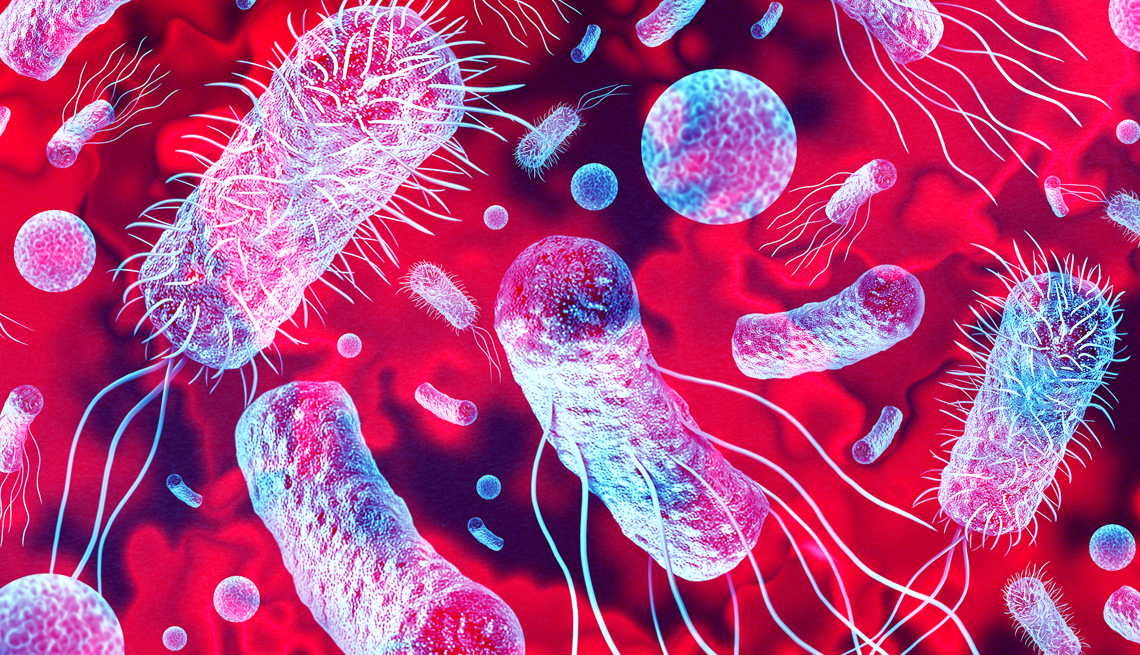
5 Superbug Myths: What Really Happens When Germs Defeat Drugs
- Select a language for the TTS:
- UK English Female
- UK English Male
- US English Female
- US English Male
- Australian Female
- Australian Male
- Language selected: (auto detect) - EN
Play all audios:
Getty Images Facebook Twitter LinkedIn
More than 39 million people worldwide could die between now and 2050 from antibiotic resistance, according to a new study published in The Lancet, and it’s projected that older adults, who
are at higher risk for infections, will bear much of the burden.
Drug-resistant infections — which occur when bacteria or other pathogens change and are no longer responsive to medications designed to kill them — have claimed the lives of at least 1
million people each year since 1990, and the numbers are only increasing. Annual deaths are projected to rise from 1.14 million in 2021 to 1.91 million in 2050, the study’s researchers
found, and the increases are expected to be largest among those 70 years and older.
In the U.S. alone, more than 35,000 people die from antibiotic-resistant infections each year, according to the Centers for Disease Control and Prevention (CDC).
For several years, researchers have been sounding the alarm on this growing health crisis that could change the way we treat simple infections, like strep throat, or go about doing routine
surgeries, such as joint replacements. Dame Sally Claire Davies, special envoy on antimicrobial resistance for the United Kingdom, said in a news release that this latest study “confirms
that the world is facing an antibiotic emergency, with devastating human costs for families and communities across the world.”
Despite the danger it poses, antibiotic resistance is widely misunderstood, global research shows. Here are five myths about antibiotic resistance, plus tips on how you can protect yourself
from a superbug infection.
Myth 1: Antibiotic resistance is when people become resistant to antibioticsFact: Antibiotic resistance is when bacteria become resistant to the drugs designed to kill them. It does not mean that people develop a resistance to antibiotics.
“The simplest way to understand it is that the bacteria are just trying to survive,” says David Weiss, director of the Antibiotic Resistance Center at Emory University’s School of Medicine,
and they do that by mutating, or changing their genetic material, in order to escape the lethal effects of the drugs. Those that succeed continue to grow and spread.
Fungi can also morph into drug-resistant germs, as can viruses. “And what is happening is we’re seeing that this is becoming more and more frequent,” says Matthew McCarthy, M.D., an
associate professor of medicine at Weill Cornell Medicine and author of Superbugs: The Race to Stop an Epidemic. “And that means we’re running out of treatment options.”
Having a smaller arsenal of effective drugs makes treating infections caused by drug-resistant bugs more difficult — sometimes impossible. In many cases, antibiotic-resistant infections
require extended hospital stays and expensive and toxic treatment alternatives, the CDC says.
Several types of bacteria that cause common ailments — like urinary tract infections and pneumonia — have become resistant to antibiotics, the U.S. Food and Drug Administration reports.
Bacteria that cause skin infections and meningitis also make the list.